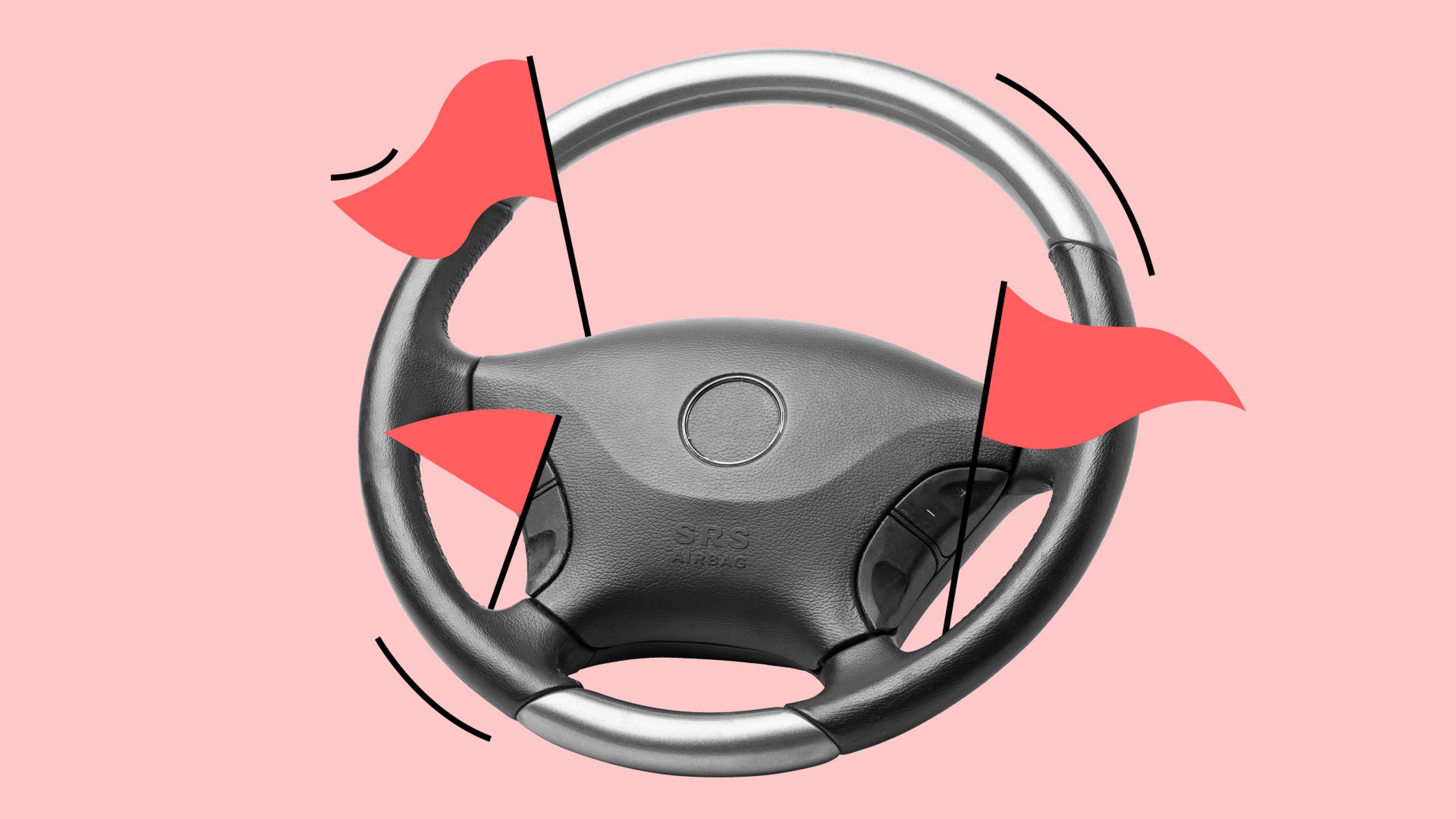07/12/2021
Checking the real mileage on a used car: how to detect an odometer rollback?

Even though illegal, mileage rollback is still common among used car sellers. Mileage is a popular indicator of a vehicle’s condition. A lower mileage means a higher price, therefore many car sellers commit odometer fraud to improve their profit.
Fortunately, you can often reveal the actual mileage of a vehicle the easy way – by getting a history report. Yet this won’t always work, so it’s good to know other ways to detect odometer tampering.

Looking for a reliable car?
A well-maintained and undamaged car is the most reliable! Check any VIN code to make sure you're not buying a wreck:
Many people still don’t get how important a vehicle’s mileage is. Used car buyers pay more to see fewer miles on the dash. But when numbers don’t match reality, that’s straight-up fraud. Stay with us for a minute and learn how to steer clear of this increasingly popular fraud.
Using the carVertical vehicle history report to detect odometer rollbacks
Getting a car history report is as simple as entering a vehicle’s VIN into the carVertical VIN decoder. Aside from the real mileage, our report may tell you about past accidents, title changes, and more.
Here’s how reports reveal the mileage:
This first example shows how steadily the mileage graph has been increasing each year. This is clearly a car that hasn’t had an odometer rollback. Success!
Sometimes you’ll see graphs that go almost flat. It could mean that someone rolled the mileage back during this flat period. However, scammers tend to really roll it back – you’ll see an example in a minute. Flat areas are more likely to mean that the time between records is short or the car hadn’t been used for a while.
Here’s a classic example of a rollback right before the 120,000-mile mark. Why is this mark so special?
Well, many modern cars start developing lots of issues around this point. Used car sellers are aware of this and may illegally “adjust” odometer readings.
In this example, someone rolled the odometer back by 51,190 miles between November 2023 and February 2024. If the next owner of this car didn’t get a vehicle history report before buying it, they may be in for a nasty surprise! That unpleasant 120k mark is a lot closer than it seems.
If you’re about to buy a used car, always use a VIN decoder to find out its actual mileage together with info about thefts, titles, damages. More and more people are making this a habit, and scammers hate it.

Check your registration number
Reveal them all! Just enter a VIN code and click the button:
How widespread is mileage fraud?
Mileage rollback statistics are ruthless. There’s not a single country in the world where buyers could be careless when picking their new ride, and mileage fraud wouldn’t be a thing. However, the situation in different countries varies.
Historically, Eastern Europe always had more problems with scammers. However, clocked mileage is also common in Western Europe, where insincere sellers typically alter the mileage of more expensive cars.
The worst situation is in Latvia, where 11.2% of vehicles checked on carVertical had clocked mileage. Other Eastern European countries like Ukraine (9.1%), Lithuania (7.8%), and Romania (6.5%) also have a significant share of cars with manipulated odometer readings.
While odometer fraud is less common in the United Kingdom (2.1%), Switzerland (2.1%), and Portugal (2.3%), buyers should still be cautious. Since drivers prefer cars with lower mileage, it’s easy to fall prey to scammers and then find out later that you overpaid for a vehicle with an altered odometer. Not to mention all the other problems it can cause in the long run.
6 signs of odometer rollback
Odometers in cars can be either mechanical or digital. To tamper with a mechanical odometer, scammers would have to disassemble it. With that said, digital odometers have taken over the car market during the past couple of decades. They were introduced not only to change the aesthetics – preventing odometer rollbacks was another reason. Ironically, anyone can buy a cheap tool to edit the numbers on a digital odometer today.
Fortunately, there are ways to spot a fake odometer reading even before getting a history report. Here’s what you should consider.
1. Brake pedal wear is inconsistent
How often do you change brake pedal pads? Yes, never.
Well, consider that a brake pedal is constantly in use when driving, so it wears down quite consistently with mileage. For example, a brake pedal should be only slightly worn in a 60,000-mile car. On the other hand, a car with 180,000 miles under the belt is likely to have a tired-looking break pedal.
The catch? Look for inconsistencies! Does your 30,000-mile car have a heavily worn-out break pedal? Or does it look like it’s just been replaced? These are red flags to look out for.
2. Worn-out steering wheel and seats
When car experts are looking for a used car, the first thing they examine after opening the door is the condition of the steering wheel and the driver’s seat.
Different manufacturers use different types of materials for steering wheels and seats. Usually, budget models are more prone to wear and tear, while executive or luxury automobiles boast plushier and sturdier materials. Still, the driver always touches these areas, so these are pretty accurate mileage indicators.
If the leather or fabrics are already tattered, the car may be way past the 120,000-mile mark.
3. Loose door hinges
Vehicle door hinges go through tremendous stress every time you open the door. A car door weighs about 80-100 lbs and is usually held by two hinges. It’s therefore no surprise, that frequent usage and slamming can seriously affect these hinges. Moreover, they often rust due to water and salt.
Open the driver’s door, grab it by the end and try to wiggle up and down. There shouldn’t be any play as these hinges are usually quite sturdy. If it’s loose, the car has seen a lot already, and the low odometer reading may be fake. This is a great trick up your sleeve because unlike with steering wheels and upholstery, sellers almost never replace door hinges.
4. Scratches or damage inside the dashboard
As mentioned earlier, to roll back an analog odometer, you have to disassemble the dashboard. Only exceptionally steady and skilled hands can perform that without leaving a trace.
Aside from scratches or fingerprints inside the dashboard, missing screws, and broken plastic bits, a manipulated mechanical odometer may offer other evidence, such as misaligned numbers.
5. There is no history of the maintenance
Every vehicle requires regular servicing. Each time a mechanic changes your oil, timing belt, or fixes some issues, a car’s servicing history should get a new record together with the current mileage. If possible, look through the maintenance records to ensure there were no mileage drops.
If the owner doesn’t have a single maintenance record, this can be a red flag, but unfortunately, it often isn’t. Not everyone maintains a coherent record!
6. The car's mileage doesn't reflect its age
While everyone’s trips vary, 12,000 miles is the average annual distance traveled in a car each year. It means that if the vehicle is older than ten years, it probably should have more than 120,000 miles on the clock. Take that into account when looking for a used car.
What are the dangers of an odometer rollback?
The purpose of a mileage rollback is to scam used car buyers. A 30,000-mile car can be twice as expensive as one with 100,000 miles on the clock. So, it’s not surprising that many scammers target mileage to take advantage.
Manufacturers don’t build long-lasting cars these days. They profit the most from spare parts, not car sales. That explains why new cars become money pits just after a few years. If you’re paying an extra buck for a lower mileage, at least make sure it’s original.
To get a better view of how important the actual mileage is, here’s an idea of how various bits in the car go out as mileage increases:
That’s why used car sellers are so keen to roll the mileage as much below 120,000 miles as possible.
Bear in mind that these numbers aren’t tied to every car on the road. While some manufacturers focus solely on reliability, others seek better road performance, comfort, or luxury features.
Moreover, some people take better care of their cars than others. Undergoing regular oil changes and replacing broken parts as soon as they’re damaged – these are crucial requirements when it comes to longevity. Unfortunately, many drivers still ignore them.
What is odometer fraud?
The act of editing odometer readings to fake the mileage is often called "odometer fraud", pointing out the fact that this is illegal in most countries and US states.
This scam is popular worldwide. As modern odometers went digital, the rollback became even more straightforward as the disassembly of a dash is not needed anymore.
Proving odometer fraud in court is complicated because many factors can present this problem as the victim’s lack of attention. The best advice is to overall avoid cars with fake mileage.
